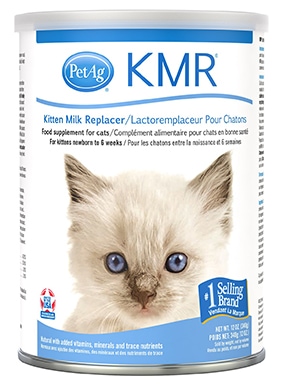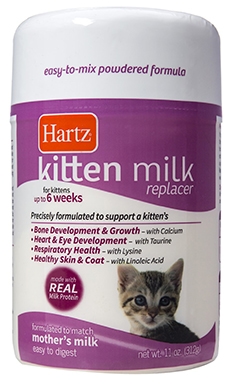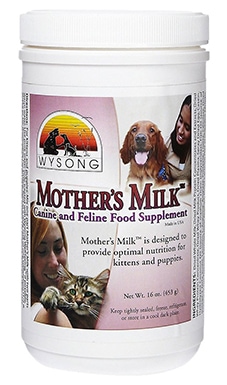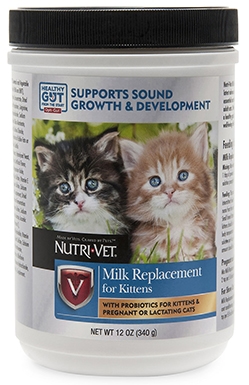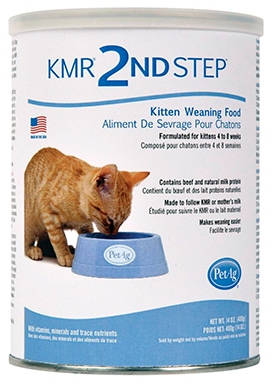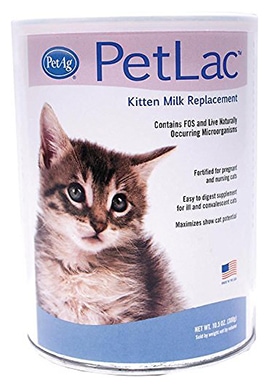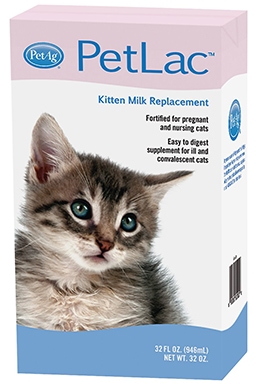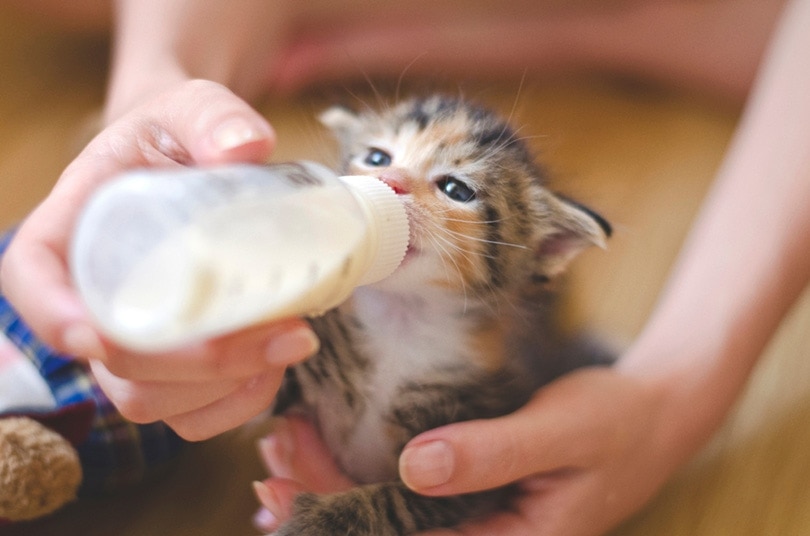
In some situations, feeding a kitten by hand is necessary. Whether the kitten’s mom is unwilling or unable to nurse, s kitten formula is required.
You should always work with a vet in this sort of situation, as problems can easily develop when kittens are not with their mothers. However, we did do some of the work for you by reviewing some of the best kitten milk replacers. Some kittens take well to formulas, while others don’t. Therefore, we recommend trying multiple formulas as necessary.
As always, speak with your vet about which formula may work best for your cat.
A Quick Glance at Our Favorites in 2024
| Image | Product | Details | ||
|---|---|---|---|---|
| Best Overall |

|
PetAg Powder Milk for Kittens |
|
Check Price |
| Best Value |

|
Hartz Powdered Milk Replacer |
|
Check Price |
| Premium Choice |

|
Wysong Mother’s Milk Supplement |
|
Check Price |

|
Nutri-Vet Powder Milk Supplement |
|
Check Price | |

|
PetAg 2nd Step Weaning Kitten Supplement |
|
Check Price |
The 7 Best Kitten Milk Replacers & Formulas
1. PetAg Powder Milk Supplement for Kittens — Best Overall
| Size: | 12 ounces |
| Form: | Powder |
PetAg KMR Powder Milk Supplement for Kittens is often recommended by veterinarians. It is known to work well and is widely available. It also isn’t that expensive. We consider it the best kitten milk replacer and formula available.
This supplement provides a complete diet for kittens that cannot nurse for one reason or another. It can also be given to stressed cats that are unable to eat or need extra nutrients, as it contains essential protein and amino acids. Some users reported using it to support their senior cat’s health when they were unable to digest food properly.
As a powder, this formula is easy to reconstitute. However, it can be a bit lumpy, so a blender is recommended.
It is designed to closely match the ratios of proteins and energy that your kitten would naturally consume if they were nursing.
2. Hartz Powdered Milk Replacer for Kittens — Best Value
| Size: | 11 ounces |
| Form: | Powder |
The Hartz Powdered Milk Replacer Formula for Kittens is a bit cheaper than most other options, even when you take size into account. For this reason, we consider it to be the best kitten milk replacer and formula for the money.
This formula covers all your kitten’s needs when they are nursing. It is a formula that supports your kitten’s natural growth and mirrors what they would be getting from their mother. It is easy to digest and gentle on your kitten’s stomach.
The powder mixes easily with room-temperature water, so you can easily bottle-feed on demand. You don’t have to make huge batches ahead of time, like some other formulas. However, some lumps are inevitable unless you use a blender.
You can also give this formula to pregnant or nursing mothers as a supplement. It may be a good option for senior cats too.
3. Wysong Mother’s Milk Supplement — Premium Choice
| Size: | 16 ounces |
| Form: | Powder |
Right off the shelf, Wysong Mother’s Milk Supplement is a bit more expensive than most other options out there, and the large size cannot entirely account for the high price.
This formula is created with whole, natural ingredients to mirror natural milk. It does a good job of this. The use of high-quality ingredients is one reason that it is expensive.
This formula contains proteins, fats, and vitamins — all the things that your feline needs to grow big and strong. It even contains antibodies that would naturally be present in their mother’s milk.
You can give this supplement to both puppies and kittens. This versatility makes it a good option for rescue workers who might end up needing to feed both animals. You can also sprinkle it on the food of older cats, should they need a little something extra in their diet.
4. Nutri-Vet Powder Milk Supplement for Cats
| Size: | 12 ounces |
| Form: | Powder |
The Nutri-Vet Powder Milk Supplement for Cats contains all the essential amino acids that your kitten needs to grow. It mimics a queen’s milk as closely as possible to prevent any nutritional deficiencies.
This formula also contains probiotics, which can further help with digestion. Probiotics are also important for the immune system and brain development. The gut affects the whole body, so it is essential to take care of it.
This formula is made in the U.S.A., so it has to meet certain quality standards.
However, this formula has a short shelf life, so it doesn’t make sense to buy it in bulk. But it is difficult to always have it on hand, given that bottles go out of stock so quickly.
5. PetAg KMR 2nd Step Weaning Kitten Food Supplement
| Size: | 14 ounces |
| Form: | Powder |
For older kittens, you may be able to use PetAg KMR 2nd Step Weaning Kitten Food Supplement. This formula is a bit different from most other options on the market, as it is specifically made for older kittens that are weaning.
It is creamy, transitional milk that is not suitable for younger kittens because it does not contain the proper vitamins and minerals. It is still highly digestible, though, so it may work for kittens that have sensitive stomachs.
As a powder, it does not have to be refrigerated, and it is easy to use.
That said, formulas designed for younger kittens also work for older kittens (and even as a supplement for older adult cats). Therefore, it is probably not necessary to purchase this food.
Furthermore, this powder is lumpy when mixed, so you’ll need a blender.
6. PetAg PetLac Kitten Milk Replacement Powder
| Size: | 10.5 ounces |
| Form: | Powder |
The PetAg PetLac Kitten Milk Replacement Powder contains live probiotics, which can be important for new cats because these promote digestive health. However, kittens do not receive probiotics from their mother’s milk, so they aren’t exactly necessary.
This product is designed to match the ratios of proteins found naturally in the queen’s milk. In other words, the formula is nutritionally complete and mirrors a queen’s milk.
That said, it’s difficult to mix. It seems to be lumpy unless you use a blender. It is also expensive, though you aren’t paying for any specific feature.
7. PetAg PetLac Kitten Milk Replacement Liquid
| Size: | 32 ounces |
| Form: | Liquid |
Most of the replacement kitten milk formulas are powders, as these are the most popular options on the market. The PetAg PetLac Kitten Milk Replacement Liquid is one of the few liquid options available. This company is one of the largest that produces milk replacements, so it is often recommended.
This ready-to-drink formula requires no mixing, which is a big boon. It can be used as-is without any other prep. The resealable carton is great if you’re feeding multiple kittens.
The formula is high in calories and designed to completely replace a mother cat’s milk.
However, it is much more expensive than most other options, largely because it is pre-mixed. You’ll also need to purchase more to feed your kittens because it is not nearly as concentrated as a powder is.
Buyer’s Guide: How To Choose The Best Kitten Milk Replacer & Formula
Feeding kittens is quite complicated. Exactly how much formula a kitten needs can vary, but getting it right is essential to their proper growth. You also have to consider factors like digestive issues and allergies when using replacement formulas, as these can pop up when feeding kittens anything other than cat milk.
For this reason, we developed a complete buyer’s guide to help you figure out what formula to purchase and how to use it.
How Are Kittens Usually Fed?
To understand how and why to feed kitten formula, it is essential that you understand how kittens are normally fed.
Kittens are mammals and depend on their mother’s milk for nutrition and passive immunity while they develop their own immune system.
The milk of a mother cat, or queen, is affected by several factors, including most importantly, her nutrition and overall health. If a queen is not properly fed or has an underlying illness, she may be unable to produce enough milk for her kittens.
Typically, a kitten will stay with their mother for several weeks, and she will wean them at the right time. However, sometimes the mother cannot raise the kitten for one reason or another. Therefore, humans may have to step in and give the kitten a helping hand.
Orphaned kittens can be raised into healthy adults with a bit of care, including being fed a replacement for their mother’s milk
And it Comes Formula
Kitten formula was developed as an alternative to a cat’s natural milk. If a kitten is orphaned, they can receive all their nutrition from the proper milk replacement.
Liquids are essential to help new kittens stay hydrated and alive. The average kitten water intake is quite high, usually around 155-230 milliliters per kg of body weight every 24 hours.
When you feed formula to a kitten, you are replacing this water content that they would usually receive from their mother’s milk. Therefore, kittens will need around 180 ml of formula per kilogram of bodyweight a day on average. While you should ensure that your kitten is offered at least this much, you should also partially feed them on demand.
A cat’s milk is digestible and calorie-dense. It also contains a large amount of protein, as cats are designed to consume a diet that is high in protein.
Cow’s milk is not a suitable alternative because it is not high in protein. For this reason, a kitten milk replacement is essential. Commercial options are superior to cow’s milk and most things that you can make at home.
That said, commercial milk replacers should offer certain nutrients.
Feeding Formula
Choosing the correct formula is only half the battle. You also have to feed it to your kittens, which can be a challenge in itself.
First, you’ll need to find a small pet nursing bottle. It is always recommended to be ready with this kit if you know your queen is expecting, especially if she is inexperienced.
Usually, kittens will suck on the bottle until they are done. You should record how much they eat to ensure that they are getting enough.
Be sure the bottle that you choose restricts the flow of the bottle to a drop at a time. A higher rate of flow can overwhelm the cat and make the milk go into their lungs instead of their stomach. This can lead to all sorts of medical issues.
Next, when you feed the kitten, be sure to hold them horizontally. Their head should be in a neutral position. You do not want them to accidentally choke by having their heads to the side. Always hold the kitten while feeding, as this ensures that they are eating correctly (and it helps with socialization as time goes on).
Warm up the formula to about 100 degrees Fahrenheit before feeding the kitten. Cold formula can potentially lead to digestive problems, which can be serious in small kittens.
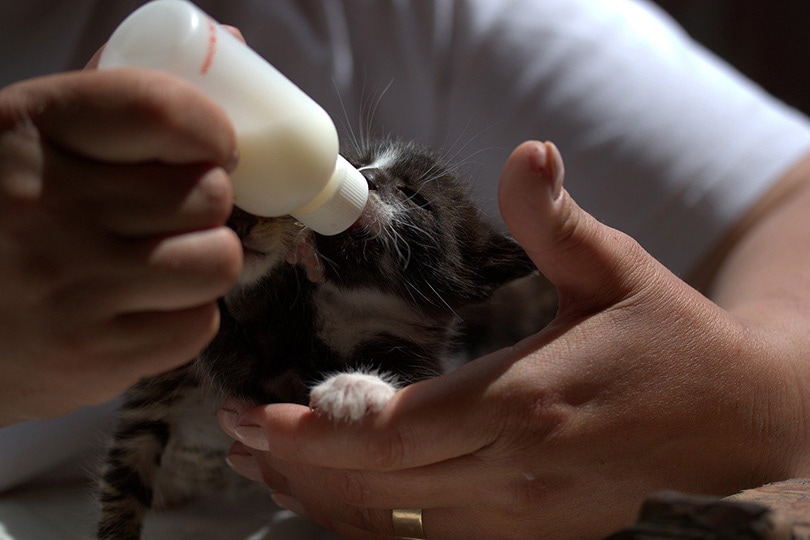
Formula Feeding Schedule
You should keep all orphaned kittens on a strict schedule to ensure that they are receiving enough subsistence. Orphaned kittens do not always have enough strength to wake up and eat by themselves, so it’s up to you to ensure that they are on a good schedule.
You should feed kittens up to 3 weeks old every 2–4 hours. As a general rule, one week old kittens should be fed every 2 hours, two-week-old kittens every 3 hours, and three-week-old kittens every four hours. So, you will most likely need more than one person to help ensure they receive proper nutrition.
Check the instructions on your milk replacer for the amount that you should be feeding your kitten each day. Then, divide the total amount by the number of times that your kitten eats.
Weigh and calculate the recommended amount of milk replacement for each kitten. Avoid overfeeding the kittens as it could lead to diarrhea, which can be deadly in small kittens. Slightly underfeeding, while survivable, is also not ideal – kittens need the right amount of nutrients for a healthy development.
You should continue to feed your kitten only a milk replacer until they are around 3-4 weeks of age. Then, you can slowly start weaning them.
Tracking Orphaned Kittens
You should always track the growth and development of orphaned kittens. You should maintain a logbook of your kitten’s weight, milestones, and feeding schedule. If something happens, it can provide you with important information that can help you figure out what to do.
You should also make notes about their physical development. For instance, note when they first open their eyes and when their teeth begin to poke through their gums. Stool consistency is also important, as diarrhea can cause serious dehydration.
If you have multiple kittens, be sure to do something to separate them from each other. For example you can use colored collars or paint certain nails with pet-safe colored polish.
You should weigh each kitten at birth and note it down. Then, weigh them every day or two until they are 4 weeks old. After that, you can switch to weekly weigh-ins until they are weaned and thriving.
Kittens at a young age can go downhill quickly if they have a problem, so it is essential to keep note of their weight every day. Otherwise, you may not catch potential issues in time.
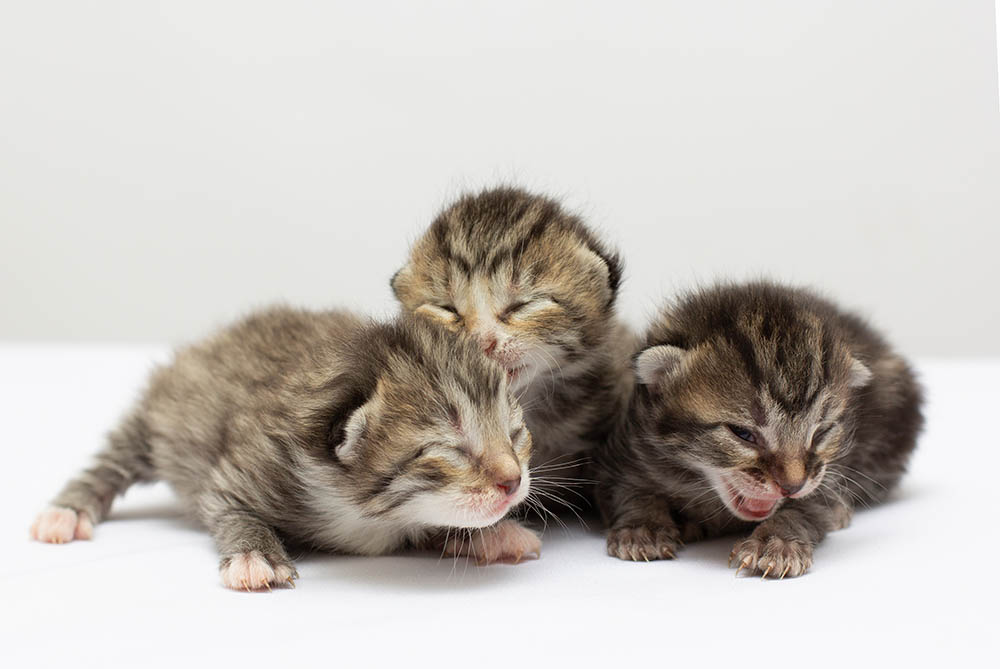
Conclusion
If a kitten is orphaned before they are ready to be weaned, a milk replacer is essential. Luckily, most milk replacements out there are designed to completely meet a kitten’s needs, so you don’t have to worry too much about choosing a nutritionally complete option. However, that doesn’t mean they’re all the same. Some include optional ingredients, like probiotics and antibodies. Others are made with different ammounts and sources of protein, which can affect their digestibility.
Even though a kitten can survive on any formula (in most cases), you should still take your time to choose a quality option.
For most kittens, we recommend the PetAg KMR Powder Milk Supplement for Kittens. This formula is nutritionally complete and has all the vitamins and minerals that your cat needs. It is also easy to make and can be refrigerated for 24 hours, making it the overall best kitten milk replacers & formulas
For those who need a cheap formula that still gets the job done, take a look at the Hartz Powdered Milk Replacer Formula for Kittens. It includes everything that your feline needs to thrive, and it is easy to mix up too.
We hope that our reviews gave you insight into what formulas to choose for your kittens. If they react poorly to the first one that you select, simply try a different one. Sometimes, kittens are just sensitive to certain components.
See also:
- 10 Best Kitten Foods for Diarrhea – Reviews & Top Picks
- 10 Best Probiotics for Cats – Reviews & Top Picks
- Do Cats Poop Out of Spite? Deciphering Your Cat’s Behavior
- Do Cats like Privacy When They Poop? Deciphering Your Cat’s Behavior
Featured Image Credit: Anca Popa, Shutterstock





